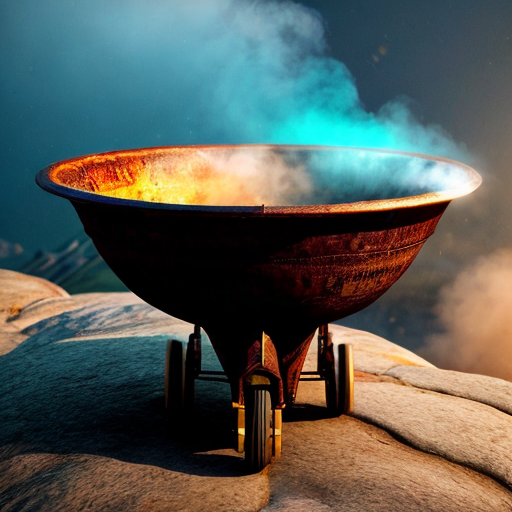Unveiling the Mysteries: Introduction to Barrows in Archaeology
Barrows, also known as tumuli, are ancient burial mounds that have long fascinated archaeologists and historians alike. These enigmatic structures can be found all over the world, from the British Isles to China, and are often associated with prehistoric societies. Barrows come in various shapes and sizes, ranging from simple earthen mounds to elaborate stone structures. They were typically used to bury important individuals, along with valuable grave goods, and were often seen as symbols of power and prestige in ancient societies. By studying these burial mounds, archaeologists can gain valuable insights into the beliefs, customs, and social structures of past civilizations. In this article, we will delve into the significance of barrows in archaeology and explore the mysteries they hold.
Ancient Burial Traditions: Exploring the Purpose and Significance of Barrows
An interesting fact about a barrow in archaeology is that these ancient burial mounds were often constructed with great precision and care. The builders would carefully select the location, shape, and size of the barrow, often aligning it with significant celestial events such as the rising or setting of the sun on specific dates. This suggests that barrows were not only intended as burial sites but also as important ceremonial and ritualistic structures, reflecting the spiritual beliefs and practices of the ancient cultures that built them.
Barrows, also known as burial mounds, serve as tangible markers of ancient burial traditions and practices. These structures were constructed with great care and attention to detail, reflecting the importance placed on honoring and commemorating the deceased in past societies. Barrows not only served as burial sites but also as monuments that preserved the memory of individuals long after their passing. The presence of grave goods within these mounds suggests a belief in an afterlife or the continuation of the individual's journey beyond death. Through the study of barrows, archaeologists can unravel the complex rituals and beliefs surrounding death and the afterlife in ancient cultures, shedding light on the spiritual and social significance of these enigmatic structures.
Unearthing the Past: Methods and Techniques Used in Barrow Excavations

Barrow excavations are a crucial aspect of archaeological research, providing valuable insights into the lives and beliefs of ancient societies. Before embarking on an excavation, archaeologists carefully survey the site to determine the size, shape, and potential contents of the barrow. Ground-penetrating radar, magnetometry, and aerial photography are commonly used to map out the burial mound and identify any underlying structures or anomalies. Once the site has been thoroughly assessed, archaeologists begin the meticulous process of excavation, carefully removing layers of soil to uncover the burial chamber and any accompanying grave goods.
During the excavation process, archaeologists employ a variety of techniques to document and analyze the findings within the barrow. Stratigraphy, the study of the layers of soil and artifacts within the mound, helps archaeologists understand the sequence of events that led to the construction of the barrow and the burial itself. Archaeologists also use tools such as trowels, brushes, and sieves to carefully extract and clean artifacts, bones, and other remains found within the burial mound. These artifacts are then cataloged, photographed, and analyzed to piece together the story of the individuals buried within the barrow and the society in which they lived.
In addition to traditional excavation methods, modern technologies such as 3D scanning and digital modeling have revolutionized the way archaeologists study and interpret barrow excavations. High-resolution scans of the burial mound and its contents allow researchers to create detailed digital reconstructions of the site, providing a virtual window into the past. These digital models can be used to analyze the spatial relationships between artifacts, map out the layout of the burial chamber, and even simulate the original appearance of the barrow. By combining traditional excavation techniques with cutting-edge technology, archaeologists can uncover new insights into the significance of barrows in ancient societies and shed light on the mysteries of the past.
Decoding the Secrets: Insights Gained from Barrow Discoveries
A fun fact about a barrow in archaeology is that they were often believed to be the dwelling places of fairies or supernatural beings in folklore. In some cultures, it was believed that disturbing or excavating a barrow would bring bad luck or even anger the spirits residing within. So, archaeologists had to be cautious not only of the physical challenges but also the potential supernatural consequences while exploring these ancient burial mounds!
Barrow discoveries have provided archaeologists with invaluable insights into the beliefs, customs, and social structures of ancient civilizations. The artifacts and remains found within these burial mounds offer a glimpse into the lives of the individuals buried there, shedding light on their status, occupations, and cultural practices. By studying the grave goods and funerary rituals associated with barrows, researchers can piece together the religious beliefs and cosmologies of past societies. Additionally, the spatial layout and construction of the barrows themselves can reveal information about the social hierarchy, power dynamics, and community organization of the people who built them. Through the careful analysis of barrow discoveries, archaeologists continue to decode the secrets of the past and deepen our understanding of the complexities of ancient civilizations.

